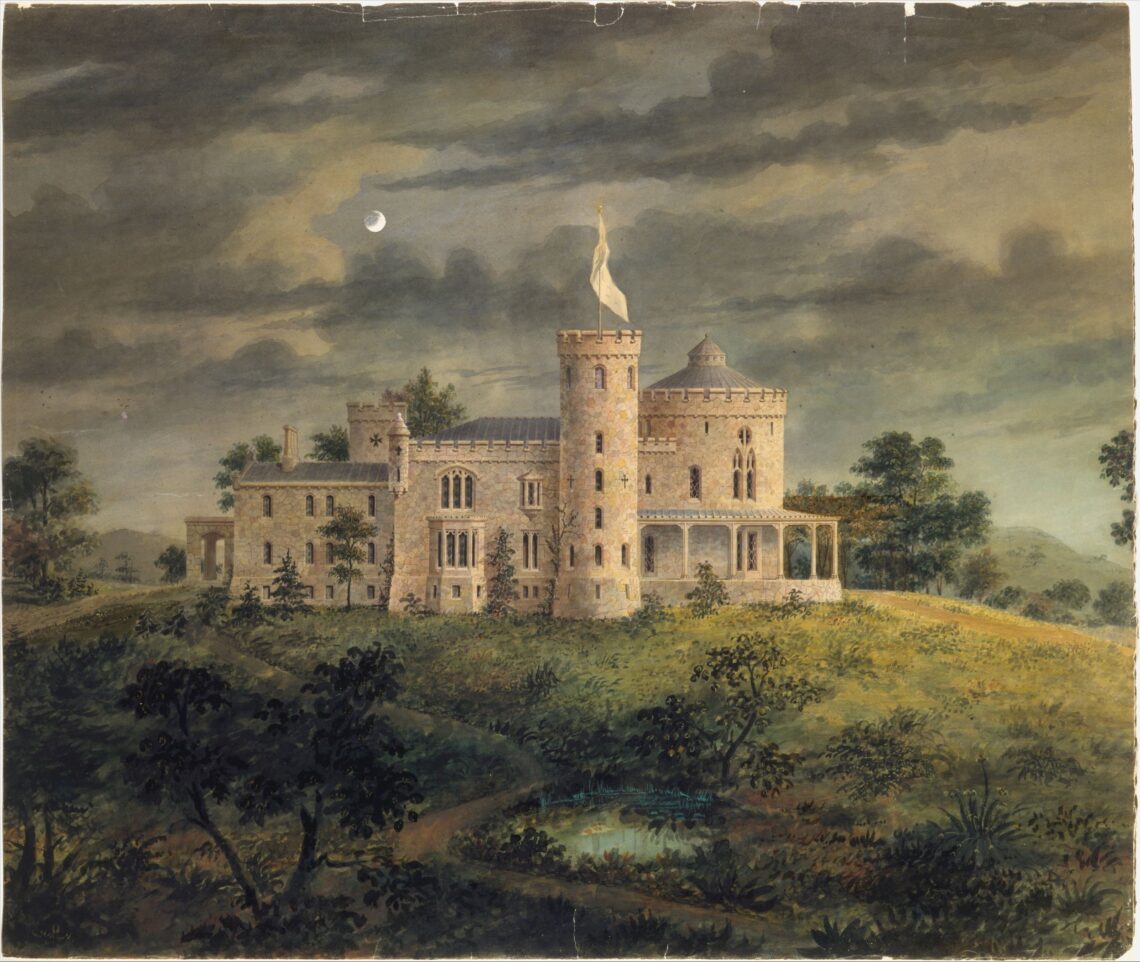
Ericstan: The Lost Castle of Tarrytown
Once upon a time, in Sleepy Hollow Country, there were not one, but four impressive stone “castles” in the region. Two of these are still in the landscape today: Carrollcliff and Lyndhurst. The remaining two are no longer standing and lost to time. One had featured prominently, overlooking the village of Tarrytown, with towers and wisteria-covered walls that commanded one of the best views of the Hudson River. This lost castle was Ericstan.
Architect Alexander Jackson Davis was busy designing and building residences in the Sleepy Hollow region in the early 19th century. He was an artistic acquaintance of George Harvey, the artist who designed Sunnyside for Washington Irving, and he designed not once but twice the Lyndhurst mansion, considered his masterpiece of English-Tudor-pointed gothic revival architecture. He was known for his picturesque and classical renderings of buildings. Still, his skills as an illustrator and designer of furniture and décor for these many structures set him apart from his contemporaries. Davis’ works can still be found up and down the Hudson Valley today, but much of his work and his notoriety have long been lost to the ages.
John James Herrick, owner of steamships and one of the most prominent flour merchants out of Manhattan and belonging to the firm Herrick & Van Boskerck, was looking to build a residence outside of the urban bustle and had set his sights on Tarrytown. Perhaps because Davis had already built at least four other residences in the area, Herrick called on Davis to design his country house in about 1855.
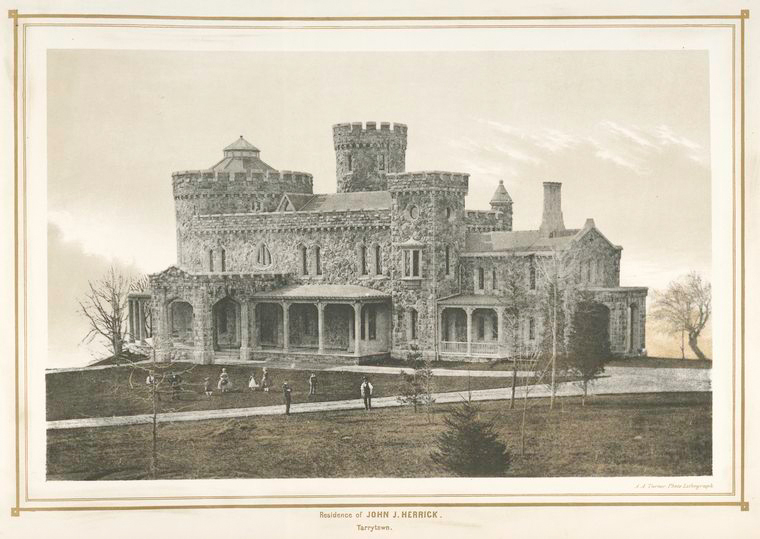
A 30-room, elaborately rotund, and asymmetrically imposing castellated Gothic revival residence was known by Herrick and Davis in their communications as “Ericstan”. Ericstan is memorable for its “castlette” appearance and the fanciful and dominating three-story tower that anchored the building and gave it the name “Herrick’s Folly” among locals. Folly or not, Ericstan had a presence.
Contents
Interior and Furnishings of Ericstan
Imagine the river views it would have afforded. The entire home was a mixture of facades and asymmetrical lines, but the round parlor on the prow of the house and delicately curved exterior veranda were perhaps some of Davis’ best design work. But Davis did not just design the house, but also one-of-a-kind furnishings exclusive to the castle.

While much of the exterior was only ever described, the parlor (or drawing room) appeared in photographs and revealed an elaborate space with dramatic vaulted ceilings. Decorative ribbing arched out of a large cluster of gothic columns in the center of the room; much like the armature of an umbrella.
Construction took about four years and included the expertise of carpenter B.I. Schoonmaker, stonemason A.H. Briggs, and, C. Lamoureux who reportedly laid out the landscape, gardens, and grounds.
“No fever. No mosquitoes, in fact it is not only the most healthy, but the best and most commanding building on the Hudson and the most beautiful and will stand through all time.”
Alexander Jackson Davis, letter to J. J. Herrick, 28 October 1864. (In Avery Library, Prints Division. Columbia University.)
J. J. Herrick and his family moved into Ericstan in 1859 but did not stay long. Financial ruin saw the Herrick family sell Ericstan to a new owner in late 1864. It would seem that only Herrick and Davis would refer to the house as Ericstan, but it would always be known as a castle.
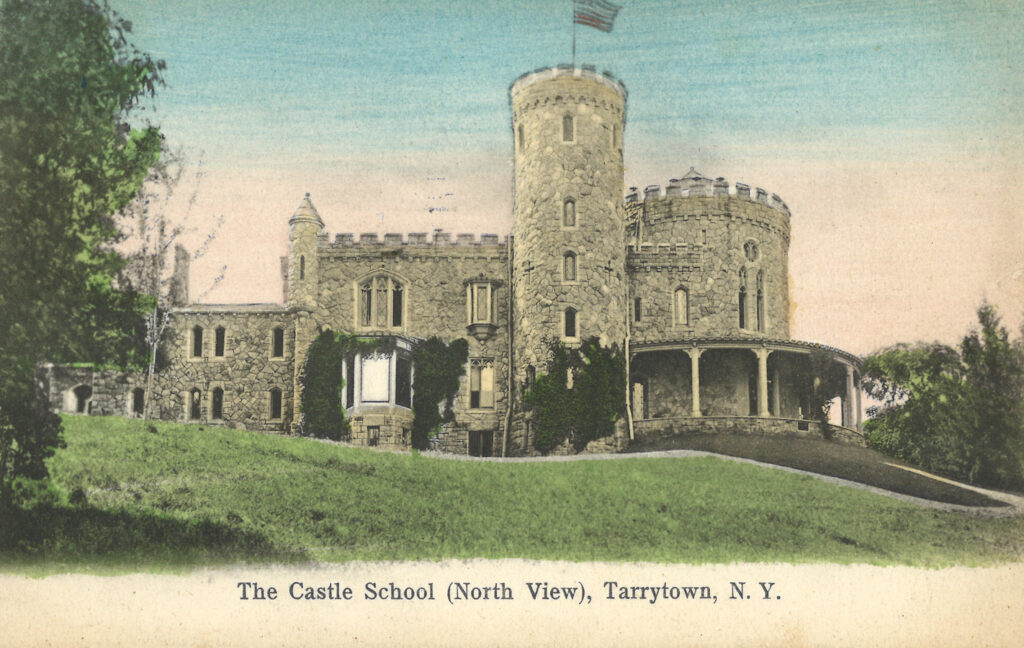
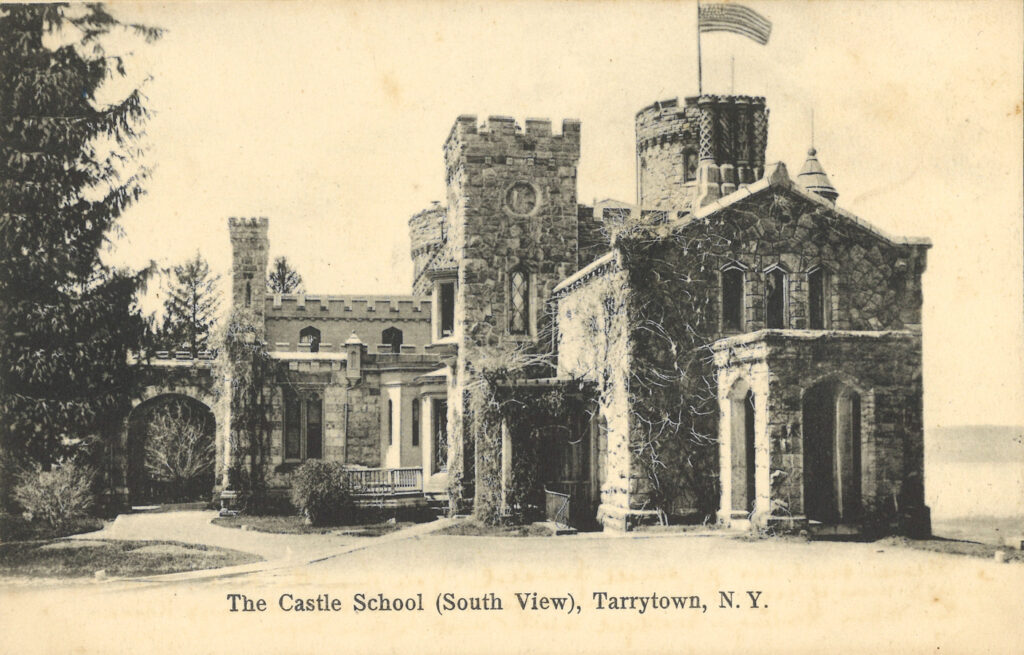
The Maynard & Hatch Years at Ericstan
The next owner of the castle Ericstan was Edward Maynard, a wealthy and renowned dentist who taught and treated patients around the country, and a firearm designer. He made his fortune with his dental teachings and work, but also for his patent for a lever-operated breechloading rifle known as the Maynard Carbine that became a popular choice of firearm during the American Civil War. It is possible that during his period of ownership, the castle was renamed Rocheaumont as seen in the map below. It loosely translates to Rock Mountain. He took ownership in the spring of 1865.
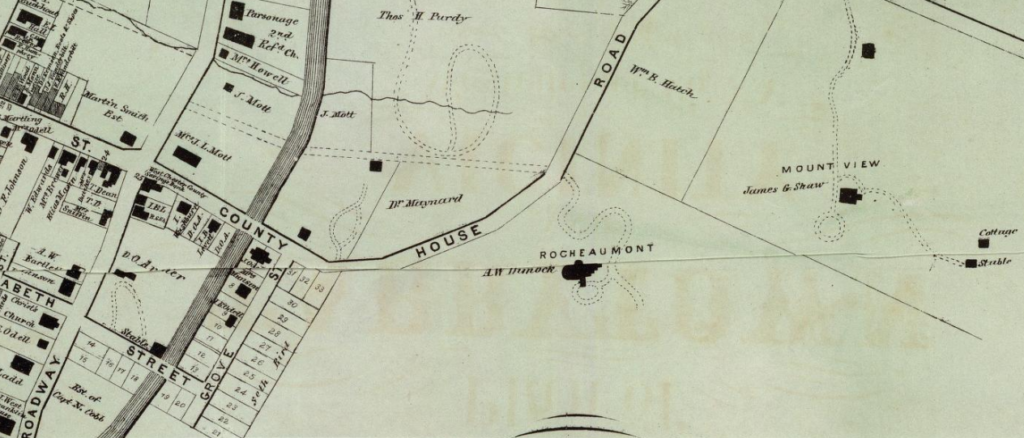
Briefly, Maynard brought Davis in to do some additional work on the castle but made no major alterations to the residence. An 1868 map above shows the location of Ericstan on the hill west of the Hudson, but with the name of “Rocheaumont’ and is recognizable for the round parlor on the western side of the house print. There is an altogether different name attached to the home, suggesting that perhaps it was rented out instead of seeing its owner in full-time occupancy.

Maynard sold Ericstan in 1880, for reasons not known, and the castle was then purchased by Alfrederick Smith-Hatch of the Fisk & Hatch insurance firm and president of the New York Stock Exchange, who also made money off the Civil War. Smith-Hatch, in turn, would sell Ericstan in 1895. An unattributed quote about Hatch says that “[He]made millions, spent millions and died broke”, likely a reason to sell to perhaps the castle’s most well-known owner: Cassity Eliza “Cassie” Mason of Miss Mason’s Finishing School for Girls.
Miss Mason’s School

This period of ownership of the castle would create the most imagery of Ericstan, ultimately losing the moniker in favor of Miss Mason’s name or simply as ‘The Castle School’. She was known by students as Miss Cassie, or to colleagues as C.E. Mason and had a family history of being in education.
Miss Mason’s school wasn’t the only girl’s school in the area, as there was one in what is today’s Patriot’s Park. With so many affluent families from the city residing, even if temporarily, in the area, it seemed to have the space to offer them an education.
Miss Mason’s School would occupy Castle Ericstan until Miss Mason died in 1933. The school would close and the property would go up for sale, but alas it would sit empty and unused for 11 years. In 1944, the magnificent towers, granite walls, and opulent gothic interiors were demolished to make room for a new housing development named almost cruelly “Castle Heights”.
Ericstan Lives On
The ghosts of all these old mansions haunt us through the names of our streets and neighborhoods; hiding in plain sight. These references are the headstones of these lost places. Thankfully, the headstones of the people who created these wonderful places can be found. Not far from where Ericstan proudly sat, original owner John James Herrick is buried with his family at The Sleepy Hollow Cemetery.
While we will never be able to visit the castle Ericstan and will only ever be able to imagine its halls and towers; taking a walk on a peaceful day and paying some respects to J.J. Herrick will suffice.



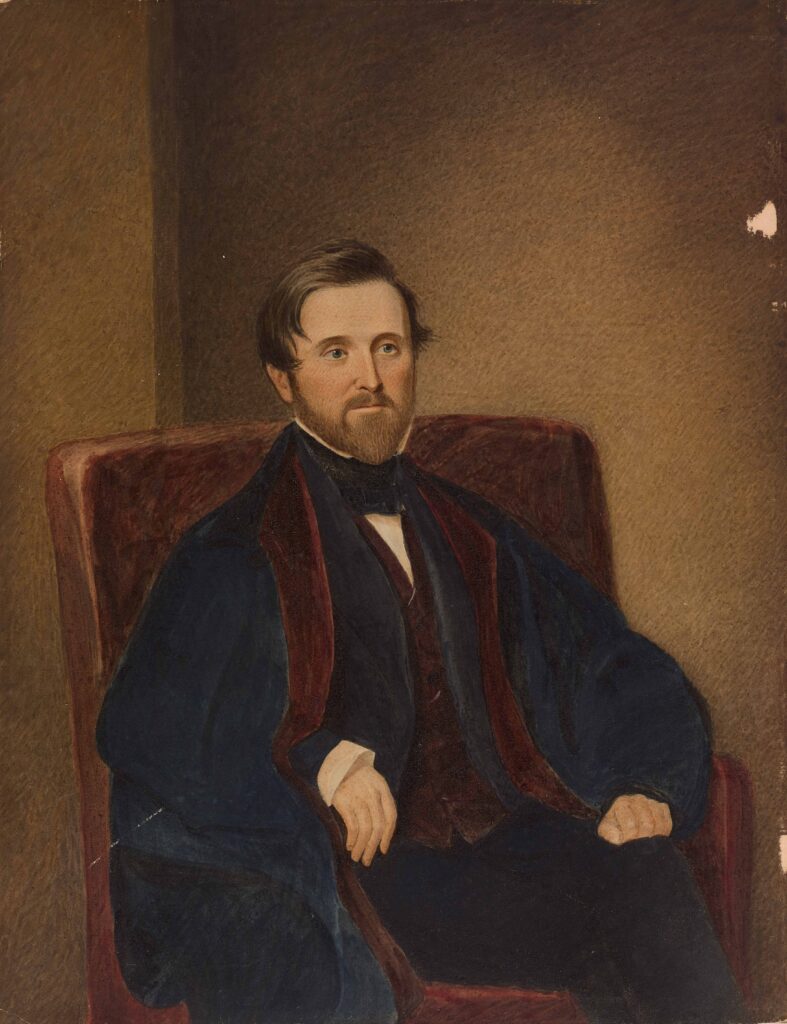
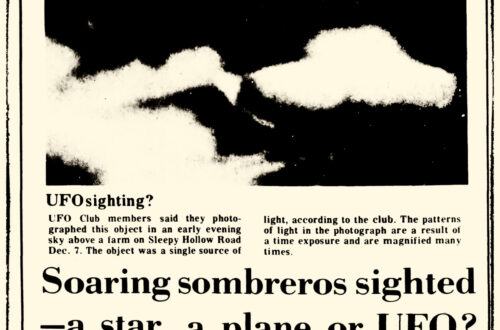
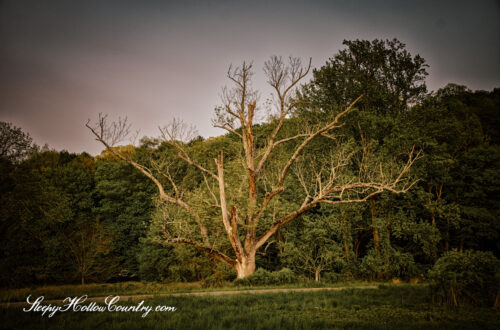

2 Comments
Jeff Hill
What is the fourth impressive stone castle in the region?
Emma G.
Hi Jeff! Many consider the Detmer Estate, Edgemont, as the fourth “castle” in the area.